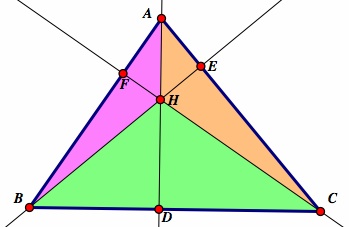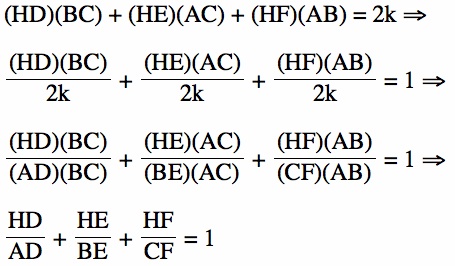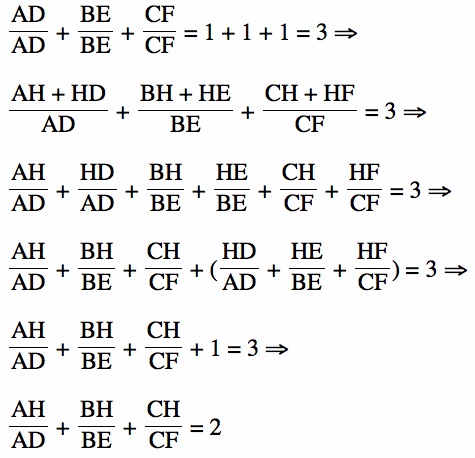

We will begin this exploration by looking at an acute triangle, ![]() ABC with orthocenter H, and points D, E and F being the feet of the perpendiculars from A, B, and C respectfully as such:
ABC with orthocenter H, and points D, E and F being the feet of the perpendiculars from A, B, and C respectfully as such:

Proposition 1: ![]()
Proof: Let k = the total area of ![]() ABC. So:
ABC. So:

Proposition 2: ![]()
Proof: Using Proposition 1, we can see that:

Note that these two propositions are true for all acute triangles because they only use the fact that the orthocenter H is inside ![]() ABC.
ABC.
If ![]() ABC is a right triangle, then H lies on the vertex that contains the right angle, which means that neither of these propositions makes any sense.
ABC is a right triangle, then H lies on the vertex that contains the right angle, which means that neither of these propositions makes any sense.
If ![]() ABC is an obtuse triangle, the H will be outside the triangle ABC. Since the proofs for these propositions are area based, the proofs fail when
ABC is an obtuse triangle, the H will be outside the triangle ABC. Since the proofs for these propositions are area based, the proofs fail when ![]() ABC is obtuse. Furthermore, Proposition 1 is false for every acute triangle. This is because if A is the vertex that contains the obtuse angle, then HD
ABC is obtuse. Furthermore, Proposition 1 is false for every acute triangle. This is because if A is the vertex that contains the obtuse angle, then HD![]() AD, which means
AD, which means ![]()
![]() 1. Therefore, since lengths are never negative,
1. Therefore, since lengths are never negative, ![]()
![]() 1 for any obtuse triangle.
1 for any obtuse triangle.